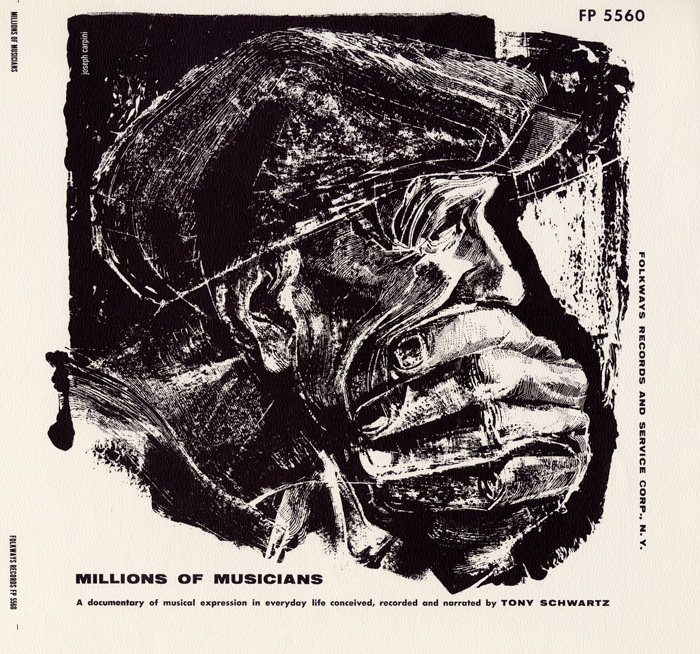 I think music is everything. Without music, I don’t think there’d be life; there would be no world left, then. Everybody’d be downhearted. Don’t you think so?
I think music is everything. Without music, I don’t think there’d be life; there would be no world left, then. Everybody’d be downhearted. Don’t you think so?
–Â unidentified plumber, on opening track of Tony Schwartz’s Millions of Musicians (1956)
Whether you have young people in your life or simply like light-hearted music, here are five songs to learn and sing. For each, I’m providing lyrics, chords, a video of me performing the song, and audio of an artist with actual musical talent performing the song. (The chords and lyrics are my transcriptions. Lower-case letter indicates minor; upper-case indicates major.) With apologies for my manifest deficiencies as a performer (yes, yes, I do plan to keep my day job), here are five fun songs, starting with the easiest to play & ending with the most challenging.
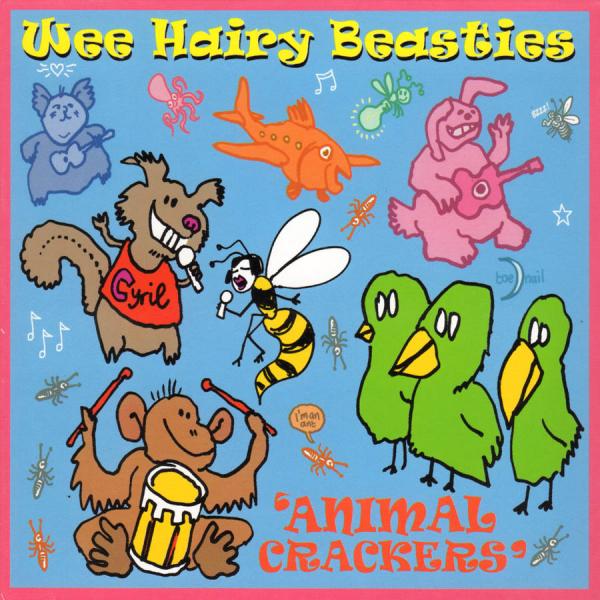 1. “A Newt Called Tiny.” Not only does this song use a mere three chords (E, B, and A), but it’s also only about 17 seconds in length. Also, since this is simply a I-IV-V chord sequence, it’s easy to change keys (try it with F, C, B-flat, say). I love the song because it’s silly and is based on a pun. It sticks in your head, is easy to remember, and (perhaps, in part, because of its brevity) never gets annoying.  Well, not to me.
1. “A Newt Called Tiny.” Not only does this song use a mere three chords (E, B, and A), but it’s also only about 17 seconds in length. Also, since this is simply a I-IV-V chord sequence, it’s easy to change keys (try it with F, C, B-flat, say). I love the song because it’s silly and is based on a pun. It sticks in your head, is easy to remember, and (perhaps, in part, because of its brevity) never gets annoying.  Well, not to me.
| The lyrics: | The chords: |
| Oh, I’ve got a newt called Tiny. | E |
| I call him Tiny because he’s my newt. | E Â Â Â Â Â Â Â Â Â Â Â Â Â Â B |
| I haven’t had him long. | B |
| I found him in the pond, | B |
| Breathing through exterior fronds. | E |
| Oh, I’ve got a newt called Tiny. | A Â Â Â Â Â Â Â Â Â Â Â Â Â Â E |
| I call him Tiny because he’s my newt. | B Â Â Â Â Â Â Â Â Â Â Â Â Â Â E |
Here’s the tune as performed in 2006 by the Wee Hairy Beasties, who are – or were, since I don’t know if they’re still active – Kelly Hogan, Jon Langford and Sally Timms (both of the Mekons), and Devil In A Woodpile.  They also wrote the song.
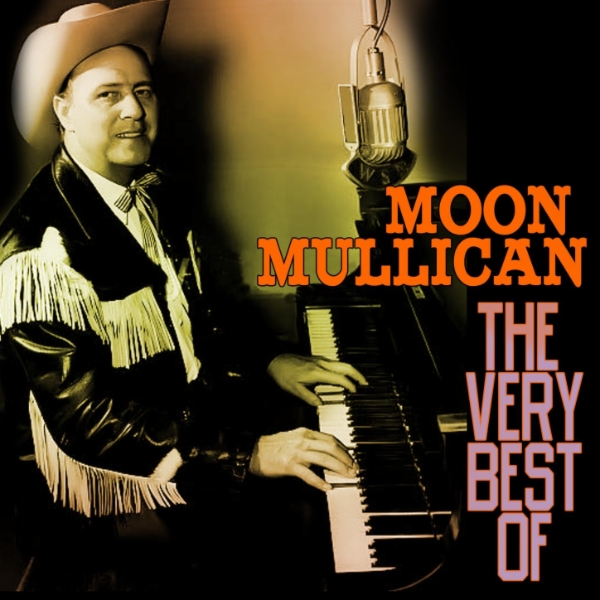 2. “Make Friends.” Another three-chord song! Just to jazz it up a bit, I play a brief intro. & outro (modeled on Moon Mullican’s rendition), but you really only need the three chords.  Also, though I always think of this as a Moon Mullican song, its writer is Ed McGraw. You can find the tune on The Very Best of Moon Mullican.
2. “Make Friends.” Another three-chord song! Just to jazz it up a bit, I play a brief intro. & outro (modeled on Moon Mullican’s rendition), but you really only need the three chords.  Also, though I always think of this as a Moon Mullican song, its writer is Ed McGraw. You can find the tune on The Very Best of Moon Mullican.
It’s a fun song and excellent advice!
| The lyrics: | The chords: |
| Make friends with the rich, | G |
| And make friends with the poor. | CÂ Â Â Â Â Â Â Â Â Â Â Â Â Â G |
| Make friends with the high, | G |
| And make friends with the low. | D |
| Even the little child, | G |
| You ought to greet him with a smile. | CÂ Â Â Â Â Â Â Â Â Â Â Â Â Â G |
| While traveling through this world, | GÂ Â Â Â Â Â Â Â Â Â Â Â Â Â D |
| Try to make friends. | DÂ Â Â Â Â Â Â Â Â Â Â Â Â Â G |
| Â _ | |
| CHORUS: | |
| Make friends, make friends, | G |
| Make friends, try to make friends. | CÂ Â Â Â Â Â Â Â Â Â Â Â Â Â G |
| While traveling through this world, | G |
| Try to make friends. | GÂ Â Â Â Â Â Â Â Â Â Â Â Â Â D |
| Wear a smile, not a frown. | G |
| And don’t you put your neighbor down. | CÂ Â Â Â Â Â Â Â Â Â Â Â Â Â G |
| While traveling through this world, | GÂ Â Â Â Â Â Â Â Â Â Â Â Â Â D |
| Try to make friends. | DÂ Â Â Â Â Â Â Â Â Â Â Â Â Â G |
| Â . | |
| Sometimes you may be weak, | G |
| And sometimes you may be strong. | CÂ Â Â Â Â Â Â Â Â Â Â Â Â Â G |
| Sometimes talked about, | G |
| And sometimes treated wrong. | D |
| But you just can’t miss | G |
| If you just remember this: | CÂ Â Â Â Â Â Â Â Â Â Â Â Â Â G |
| While traveling through this world, | GÂ Â Â Â Â Â Â Â Â Â Â Â Â Â D |
| Try to make friends. | DÂ Â Â Â Â Â Â Â Â Â Â Â Â Â G |
| Â . | |
| [Repeat CHORUS] | |
| While traveling through this world, | GÂ Â Â Â Â Â Â Â Â Â Â Â Â Â D |
| Try to make friends. | DÂ Â Â Â Â Â Â Â Â Â Â Â Â Â G |
I then play a brief outro and conclude on a G7 chord.
You’ll notice that, when I sing the song, I change “greet him with a smile” to “greet her with a smile.” I make the change because I like to sing this song to my niece. Â One other thing: When the “make friends” lands on the D chord, I’ll add a D sus chord as a little “country” flourish.
To hear the song sung properly, here’s Moon Mullican’s recording (1963):
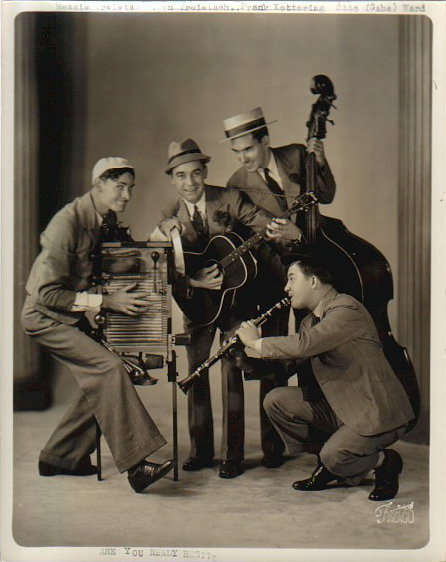 3. “From the Indies to the Andes in His Undies” is the first of two songs by the Hoosier Hot Shots. If you’ve never heard of them, well, perhaps you know Spike Jones and His City Slickers? The Hoosier Hot Shots were cutting novelty records before Spike Jones, and were a big influence on him and his City Slickers. The Hot Shots continued making records into the 1950s, but are (sadly) not as well remembered. In their heyday (the 1930s), however, they were popular. “Are you ready, Hezzie?” – spoken by Ken Trietsch to his brother Paul “Hezzie” Trietsch at the beginning of many a recording – even became a national catchphrase.
3. “From the Indies to the Andes in His Undies” is the first of two songs by the Hoosier Hot Shots. If you’ve never heard of them, well, perhaps you know Spike Jones and His City Slickers? The Hoosier Hot Shots were cutting novelty records before Spike Jones, and were a big influence on him and his City Slickers. The Hot Shots continued making records into the 1950s, but are (sadly) not as well remembered. In their heyday (the 1930s), however, they were popular. “Are you ready, Hezzie?” – spoken by Ken Trietsch to his brother Paul “Hezzie” Trietsch at the beginning of many a recording – even became a national catchphrase.
A bit more “advanced” than the previous two tunes, this one uses six chords. The song was written by Larry Royal, Billy Faber, and Ernie Burnett. Burnett also wrote the music for “My Melancholy Baby,” but I don’t know anything about Royal or Faber.
| The lyrics: | The chords: |
| From the Indies to the Andes in his undies, | GÂ Â Â Â Â Â Â Â Â Â Â Â Â Â C |
| And he never took a shave except on Mondays. | GÂ Â Â Â Â Â Â Â Â Â Â Â Â Â C |
| He didn’t eat a thing but chocolate Sundays. | Bb       d |
| ’Twas a very, very daring thing to do! | GÂ Â Â Â Â Â Â Â Â Â Â Â Â Â C |
| Â . | |
| And he carried for a charm a kippered herring | GÂ Â Â Â Â Â Â Â Â Â Â Â Â Â C |
| To protect him when the tropic sun was glaring. | GÂ Â Â Â Â Â Â Â Â Â Â Â Â Â C |
| Whoever met him thought he needed airing. | Bb       d |
| ’Twas a very, very daring thing to do! | GÂ Â Â Â Â Â Â Â Â Â Â Â Â Â C |
| Â . | |
| Otto Zilch, | F |
| He’s the hero of the ages. | C |
| Otto Zilch, | D9 |
| He will surely enter his-try’s pages. | d         G |
| Â . | |
| From the Indes to the Andes –Â what a mission! | GÂ Â Â Â Â Â Â Â Â Â Â Â Â Â C |
| Stopping only now and then to do some fishin’. | GÂ Â Â Â Â Â Â Â Â Â Â Â Â Â C |
| And he went without a copyright permission. | Bb       d |
| ’Twas a very, very daring thing to do! | GÂ Â Â Â Â Â Â Â Â Â Â Â Â Â C |
| Â . | |
| Otto Zilch, | F |
| He’s the idol of the nation. | C |
| He’ll be called | D9 |
| To the Senate for inves-ti-gation. | d         G |
| Â . | |
| And he carried for a spare a pair of panties, | GÂ Â Â Â Â Â Â Â Â Â Â Â Â Â C |
| But they didn’t fit him well –Â they were his aunties’ | GÂ Â Â Â Â Â Â Â Â Â Â Â Â Â C |
| In his undies from the Indes to the Andes – | Bb       d |
| ’Twas a very, very daring thing to do! | GÂ Â Â Â Â Â Â Â Â Â Â Â Â Â C |
| ’Twas a very, very daring thing to do! | G Â Â Â Â Â Â Â C |
I play the final G and C at the 10th & 8th frets, respectively – using the 5th string as the tonic for the G, and the 6th string for the C.
Here’s the Hoosier Hot Shots’ recording (1939):
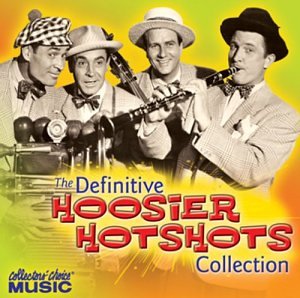 4. “I Like Bananas (Because They Have No Bones)” is another novelty tune from the Hoosier Hot Shots. Both of these songs have the distinction of being purely silly, and happily unimpeded by the racist or sexist “humor” that one sometimes encounters in songs of the period. The songwriter, Chris Yacich, is known primarily for this song.
4. “I Like Bananas (Because They Have No Bones)” is another novelty tune from the Hoosier Hot Shots. Both of these songs have the distinction of being purely silly, and happily unimpeded by the racist or sexist “humor” that one sometimes encounters in songs of the period. The songwriter, Chris Yacich, is known primarily for this song.
We’ve more chords here, in part, because the song changes key after the introductory verse.
| The lyrics: | The music: |
| [Notes for intro:] | |
| D F# G A F# E | |
| G B C D B | |
| D→E, D→E, D C# A | |
| A A B F# E D | |
| . | |
| [Chords:] | |
| I don’t like to whistle | D |
| Can’t blow saxophones | E |
| I like bananas | A |
| Because they have no bones. | AÂ Â Â Â Â Â Â Â Â Â D |
| Â . | |
| Instrumental bridge: | |
| ||: C Â a7 Â e7 G :|| | |
| Â . | |
| I stood by the fruit store on the corner, | C Â Â Â Â Â Â Â Â Â Â G7 Â Â Â Â Â Â Â Â Â C |
| Just to watch a funny-looking man. | C Â Â Â Â Â Â Â Â Â Â G7 Â Â Â Â Â Â Â Â Â A7 |
| And this is what he said. | D9 |
| I heard every word. | D9 |
| And I’ll tell you so you’ll understand. | D9Â Â Â Â Â Â Â Â Â Â G |
| G7 | |
| I don’t like your peaches. | C |
| They are full of stones. | D9 |
| I like bananas | G7 |
| Because they have no bones. | G7Â Â Â Â Â Â Â Â Â Â C |
| Â . | |
| Don’t give me tomatoes. | C |
| Can’t stand ice cream cones. | D9 |
| I like bananas | G7 |
| Because they have no bones. | G7Â Â Â Â Â Â Â Â Â Â C |
| C7 | |
| No matter where I go, | C7→F |
| With Susie, Mae, or Anna. | F Â Â Â Â Â Â Â Â Â Â Â C |
| I want the world to know: | D9 |
| I must have my banana. | D9Â Â Â Â Â Â Â Â Â Â G7 |
| Â . | |
| Cabbages and onions | C |
| Hurt my singing tones. | D9 |
| I like bananas | G7 |
| Because they have no bones. | G7Â Â Â Â Â Â Â Â Â Â C |
When I sing this song to my niece, I substitute “Emily” (her name) for “Susie, Mae” in the “With Susie, Mae, or Anna” line. So, please feel free to make substitutions for your audience.
Setting the standard for silliness, here’s the Hoosier Hot Shots’ recording (1935):
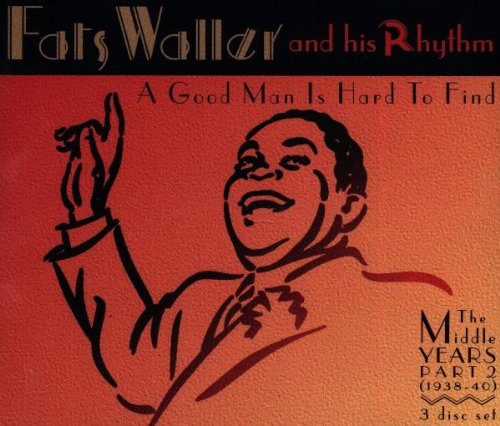 5. “You Meet the Nicest People in Your Dreams” is one of my all-time favorite songs. It was written by Al Hoffman, Al Goodhart, and Manny Kurtz –Â not famous songwriters. (Of the group, Al Hoffman might be the best known: he co-wrote “A Dream Is a Wish Your Heart Makes” and “On the Bumpy Road to Love.”) The first recording of “You Meet the Nicest People in Your Dreams” that I know of is by Fats Waller, though my own rendition owes more to Peter Mulvey’s cover. The song’s music and lyrics have a Tin-Pan-Alley whimsy that I find endearing. (Wack-a-nack-sack!)
5. “You Meet the Nicest People in Your Dreams” is one of my all-time favorite songs. It was written by Al Hoffman, Al Goodhart, and Manny Kurtz –Â not famous songwriters. (Of the group, Al Hoffman might be the best known: he co-wrote “A Dream Is a Wish Your Heart Makes” and “On the Bumpy Road to Love.”) The first recording of “You Meet the Nicest People in Your Dreams” that I know of is by Fats Waller, though my own rendition owes more to Peter Mulvey’s cover. The song’s music and lyrics have a Tin-Pan-Alley whimsy that I find endearing. (Wack-a-nack-sack!)
| The lyrics: | The music: |
| I’ve met some very nice people, | Â G (w/D, 2nd string) |
| Some very very very nice people. | Â G (w/D, 2nd string) |
| But you meet the nicest people in your dreams. | Â G7Â Â Â Â Â Â Â Â Â Â Â Â Â Â CÂ Â Â Â D |
| It’s funny, but it’s true. |  C    e      D |
| That’s where I first met you. |  B      gb    e |
| And you’re the nicest, paradise-est thing I ever knew. | Â A7Â Â Â Â D7 |
| Â . | |
| I’ve searched this universe over | G (w/D, 2nd string) |
| From Wack-a-nack-sack to Dover. | G (w/D, 2nd string) |
| And now that we have met, how sweet it seems. | GÂ Â Â Â Â Â G7Â Â Â Â C |
| I love you more, the more I know you | C      c  <– {barre chords} |
| Which only goes to show you | GÂ Â Â Â Â Â E7 |
| That you meet the nicest people in your dreams. | AÂ Â Â Â Â Â DÂ Â Â Â Â Â G |
| . | [bridge] G, e, a, D |
| [solo, accompanied by chords of first verse] | |
| I’ve searched the universe over | G (w/D, 2nd string) |
| From Wack-a-nack-sack to Dover. | G (w/D, 2nd string) |
| Now that we have met, how sweet it seems. | GÂ Â Â Â Â Â G7Â Â Â Â C |
| I love you more, the more I know you | C      c  <– {barre chords} |
| Which only goes to show you | GÂ Â Â Â Â Â E7 |
| That you meet the nicest people, | AÂ Â Â Â Â Â D |
| The very, very finest people. | B Â Â Â E7 |
| Oh, you meet the nicest people in your dreams. | AÂ Â Â Â Â Â D Â Â Â G |
| . | Slide D (top three strings only) up to G (seventh fret, top three strings only) |
N.B.: Except for bridge, e is played at fifth fret, top three strings (4 [B] – 5 [E] – 3 [D]). Â Also, gb is played at seventh fret, same configuration.
Here’s Fats Waller’s version (1939), which is a delight:
That’s all. I hope you’ve enjoyed the music and, more importantly, I hope you’re inspired to try playing these songs yourself. Look at this way: if a middling amateur like me can play these, then surely you can! As I’m sure you’ve noticed, my performances all include missed notes or a similar lyrical flub. Don’t worry about getting everything perfect. Just have fun!
And, if you don’t play an instrument, then just sing along. If you’re pursuing the sing-along option, the recordings to seek are those by the Wee Hairy Beasties, Moon Mullican, the Hoosier Hot Shots, and Fats Waller (or Peter Mulvey).
P.S. I stole (er, borrowed) the title of this blog post from Echo & The Bunnymen’s hits collection, Songs to Learn and Sing (1985).
P.P.S. Try the bananas. They have no bones in them whatsoever.
P.P.P.S. I dedicate this post to my niece, Emily, who has long known the truth about bananas.

John Gough